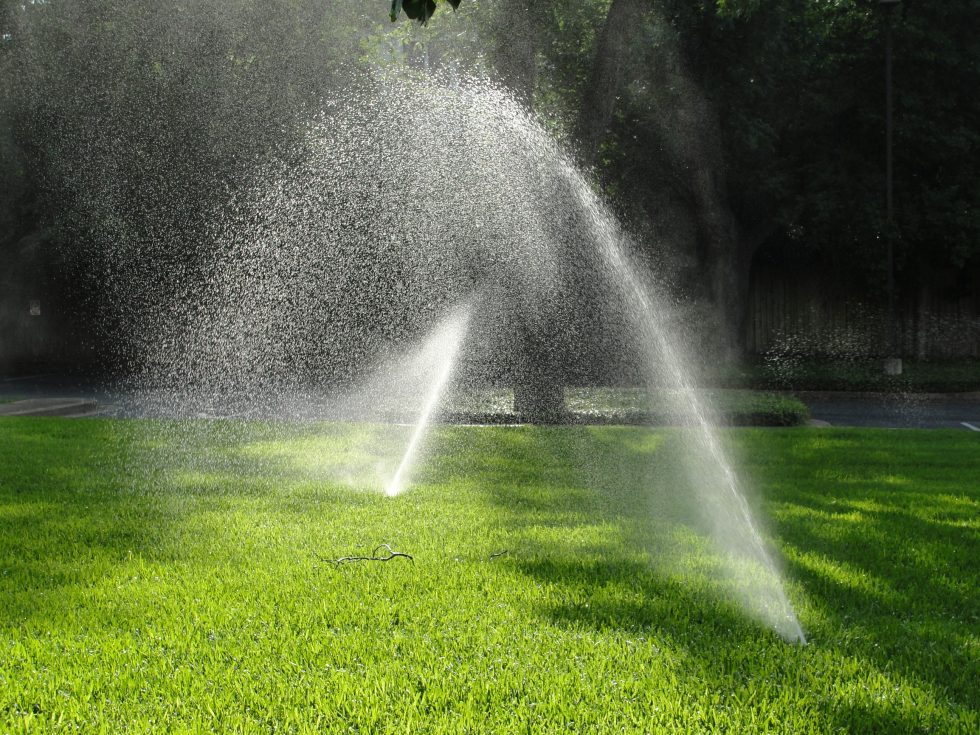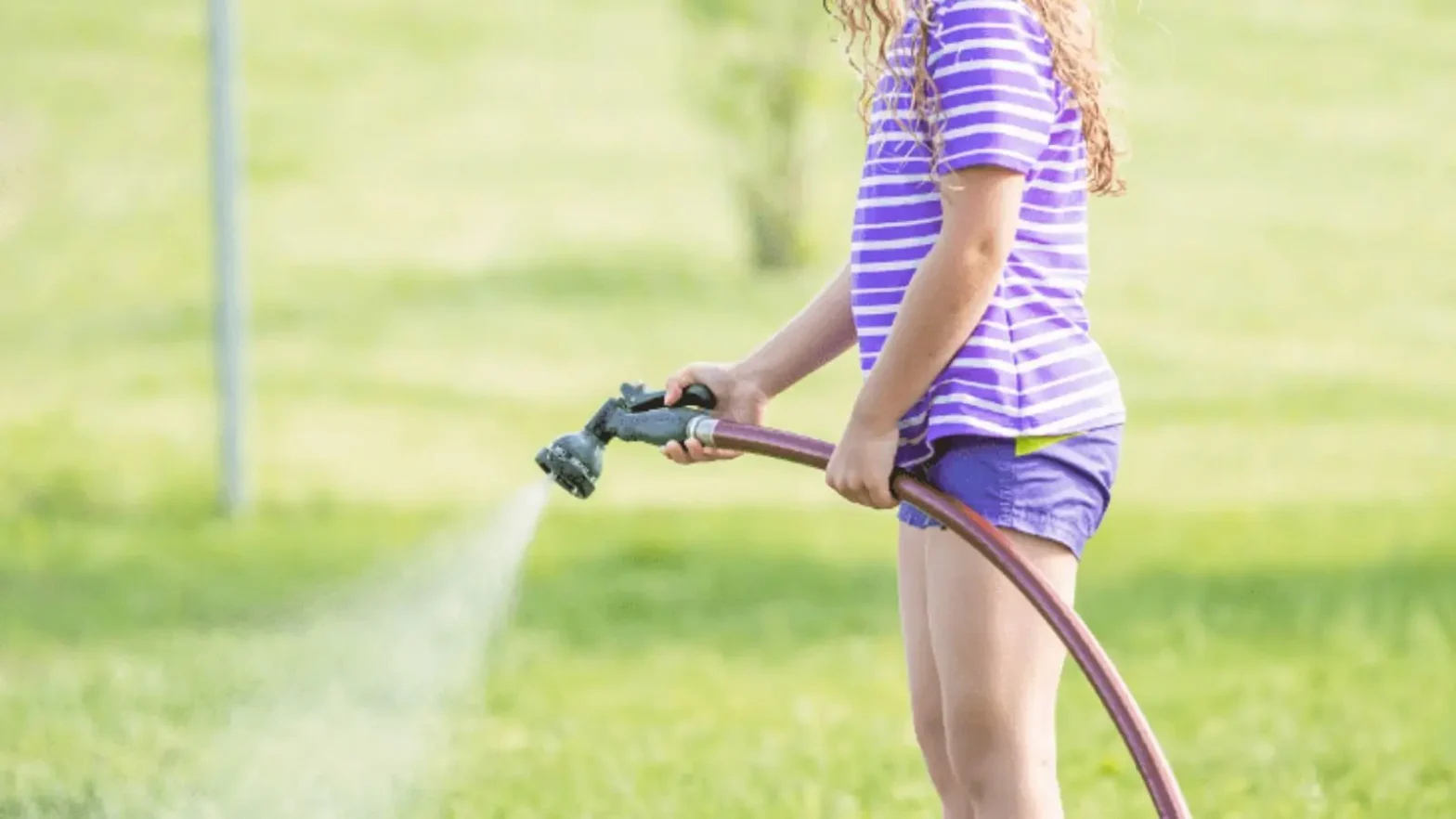If you’ve ever stood in your yard holding a garden hose under blazing sunlight, you’ve probably wondered, “Does watering grass in the sun burn it?” It’s one of the most debated lawn care questions — and one that even seasoned homeowners sometimes get wrong.
As a lawn care specialist who’s spent years nurturing turf through scorching summers and unpredictable rains, I can confidently say this myth has deeper roots than most weeds. So, before you worry about frying your lawn under the midday sun, let’s set the record straight.
Watering grass in the sun DOES NOT burn it—that’s a common misconception. While sunlight can warm water droplets, they evaporate too quickly to cause damage. The real issue is water loss from evaporation. For a healthy lawn, water early in the morning or late in the evening when it’s cooler and more moisture reaches the roots.
What Happens When You Water Grass in the Sun?
When you water grass under direct sunlight, something interesting happens — and it’s not what most people think. The moment water droplets land on the blades, they begin to warm up due to the heat, but not nearly enough to “burn” the grass.
The myth likely started because of how sunlight interacts with water — people assumed those droplets act like tiny magnifying glasses.
In reality, grass burns from heat stress, not from water droplets. The main issue during sunny hours is rapid evaporation. Much of the water never reaches the soil where it’s needed most. You might feel like you’re watering generously, but only a fraction of that moisture actually benefits the roots.
Another concern is shallow watering habits. When you water in the heat of the day, you’re more likely to quit early because it seems like the grass is getting enough — but the water hasn’t penetrated deep enough. That encourages weak, surface-level roots that struggle in hot, dry weather.
So, while watering your grass during the day won’t “burn” it, it’s definitely inefficient. You’ll waste more water, stress your lawn, and potentially see uneven green patches. For lush, resilient turf, timing — not just effort — is everything.
Best Time to Water Lawn

The best time to water your lawn is early in the morning, ideally between 5 a.m. and 9 a.m.
During this window, the air is cool, the sun is low, and wind speeds are minimal — which means less evaporation and better absorption. The soil can take in the moisture gradually, feeding the grass roots before the heat of the day arrives.
Watering early also allows your lawn to dry out during the day. That’s important because consistently wet grass overnight can promote fungal diseases such as brown patch and dollar spot, especially in humid regions.
Morning watering supports deep root growth, making your grass more drought-resistant. Each blade receives just enough hydration to stay supple and green without wasting water. If you can’t manage early morning, the next best time is early evening, around 4 p.m. to 6 p.m., but not too late. This timing still gives the lawn enough daylight to dry before nightfall.
In short, watering in the morning gives your lawn a full day to make use of that moisture efficiently, which translates into healthier, stronger grass and less water waste.
Valuable Links:
- How to Fix Tire Ruts in Lawn
- How to Kill Mushrooms in Yard
- How to Get Rid of Grass Burrs in Lawn
- How Often Should You Fertilize Your Lawn?
Worst Time to Water Lawn

The worst time to water your lawn is during the midday heat and at night.
At midday, temperatures are highest, and water evaporates faster than the soil can absorb it. You might feel productive watering under the sun, but most of that effort literally disappears into thin air.
Midday watering also increases stress on the grass. While the blades aren’t being burned by sunlight through droplets, they’re already working hard to conserve moisture and stay cool. Adding water during this time interrupts that natural process and can cause inconsistent hydration levels across your lawn.
Another poor choice is watering late at night. Although temperatures are cooler, there’s no sun or breeze to help the grass dry. Prolonged wetness overnight encourages disease and can lead to mold growth and thatch buildup over time.
For the healthiest results, always focus on consistent, deep watering at the right time of day. A well-timed watering routine not only saves water but also strengthens your lawn’s root system and boosts its resistance to drought and pests.
Best Practices for Watering Your Lawn

Even with the right timing, how you water your grass makes all the difference between a lawn that merely survives and one that thrives. Proper watering techniques build deep roots, conserve water, and keep your yard vibrant through heat waves and dry spells.
As such, here are a few best practices to help grow a thick and healthy lawn:
Water Deeply, Not Frequently
Instead of light daily watering, give your lawn a deep soak two or three times a week. Deep watering encourages roots to grow down into the soil where moisture lingers longer. Shallow, frequent watering keeps roots near the surface, making your lawn more vulnerable to drought stress and heat.
Use the Right Amount of Water
Most lawns need about one inch of water per week, including rainfall. To test how much water your sprinkler system delivers, place a few shallow containers or tuna cans around your yard and run your sprinkler for 15–20 minutes. Measure the water depth and adjust your watering schedule accordingly.
Check for Even Coverage
Uneven watering leads to patchy lawns. Regularly inspect sprinkler heads to ensure they’re not clogged, tilted, or blocked by plants. Adjust them so that water reaches every corner of your lawn evenly.
Consider Soil Type
Your soil’s composition affects how long and how often you should water. Sandy soil drains quickly, requiring shorter, more frequent sessions, while clay soil holds water longer but needs slower watering to avoid runoff. Loamy soil, the ideal mix, retains moisture well and supports steady root growth.
Avoid Overwatering
More water isn’t always better. Overwatering suffocates grass roots by cutting off oxygen and can lead to fungus and nutrient leaching. If you see puddles or consistently soggy soil, scale back. A healthy lawn should spring back when stepped on — if footprints remain, it may need less water, not more.
Adapt to the Weather
During rainy weeks, cut back on watering. During hot, dry periods, increase watering slightly while maintaining deep, infrequent sessions. Smart irrigation controllers and rain sensors can automate these adjustments, ensuring your lawn always gets the right amount of water.
Conclusion
So, does watering grass in the sun burn it? No — that’s a long-standing lawn care myth. The real challenge isn’t heat damage from sunlight but inefficiency and evaporation. When water is applied during the hottest part of the day, most of it evaporates before it ever reaches the roots, wasting both time and resources.
To keep your lawn lush, green, and healthy, water early in the morning, use deep and consistent watering, and always adjust your routine based on weather and soil conditions. Lawn care is all about balance — the right amount of water, at the right time, delivered the right way.
Follow these simple best practices, and your grass will reward you with a resilient, beautiful yard season after season.
Frequently Asked Questions
Q: Should you water grass in the sun?
A: No. While watering in the sun won’t burn the grass, it’s inefficient. Most of the water evaporates before it can soak into the soil, leaving the roots thirsty.
Q: Can watering grass during the day damage it?
A: Not directly. The real issue is water loss. Midday watering doesn’t harm the blades but wastes water and can cause uneven moisture levels, leading to patchy growth.
Q: Is it better to water in the morning or evening?
A: Morning is best — between 5 a.m. and 9 a.m. Evening is acceptable if done before sunset, giving the grass time to dry before night.
Q: How long should I water my lawn each time?
A: Aim for about 30–40 minutes per session, depending on your sprinkler’s output. You want roughly one inch of water per week, including rainfall.
Q: What signs show that my lawn needs water?
A: If your grass loses its springiness, appears dull, or footprints remain after walking on it, it’s likely thirsty. Regular observation helps you stay ahead of drought stress.
References
- https://lawnaffection.com/how-to-make-grass-thicker-and-fuller/
- https://news.vt.edu/articles/2024/07/extreme-heat-drought-lawn-care-experts.html
- https://forevergreeninc.ca/summer-lawn-care-truth-sunburnt-grass/
- https://sodscapestexas.com/does-watering-grass-in-the-sun-burn-it/

